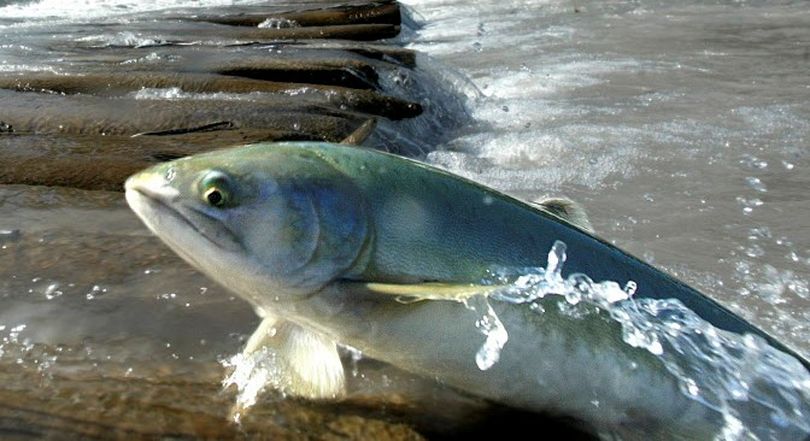Pink salmon returns to Puget Sound not so hot this year

FISHING -- Pink salmon, which return to Puget Sound on odd-numbered years, apparently will offer a little less action to anglers this summer.
The Washington Department of Fish and Wildlife released a forecast Tuesday that 1.15 million pinks are expected to return in 2017, down from the 2015 forecast of 6.8 million fish and 3.7 million fish that actually returned.
Jeff Mayor of the Tacoma News-Tribune offers these localized details:
The popular South Sound pink salmon fishery will not be as robust this year as it was in recent years, because river conditions in 2015 have led to fewer fish returning to area rivers.
The forecast return of pink salmon to the Puyallup River late this summer and into the fall, for example, is 382,000 fish. While that is the largest forecast for Puget Sound rivers this year, it is just 46 percent of the 2015 forecast of 838,000 fish, and 30.8 percent of the 2013 forecast of 1.24 million pinks.
The Hood Canal return is estimated at just over 229,000 pink salmon, down 27 percent from the 2015 forecast. The Green River forecast is almost 119,000 fish, down 81 percent, and the Nisqually River forecast is 21,400 fish, down 98 percent.
The numbers, which were agreed to by tribal co-managers, will be the basis on which recreational, commercial and tribal fishing seasons are set for Puget Sound, coastal rivers and the Columbia River. Final negotiations are expected to be concluded at meetings April 8-11 in Sacramento, California. Ocean fishing seasons also will be set.
The pink fishery is popular because of the large number of fish that typically return, compared with runs of the larger chinook and coho. Pinks are easier to catch, with anglers able to hook them from shore in places like Dash Point and Browns Point, and the banks of Puyallup and Nisqually rivers.
It was river and ocean conditions in 2015 that are resulting in the low forecast for this year, said Aaron Dufault, a pink, chum and sockeye specialist with the state Department of Fish and Wildlife.
“They returned in 2015 when we were in the middle of a drought. That summer, we had river closures because of conditions,” Dufault said. “Water levels were really low, and the water was very warm.”
Because the fish returning in 2015 were smaller than normal, Dufault said, the agency expects fewer eggs were laid during spawning that fall.
The eggs that were laid and fertilized were then impacted by three or four floods during heavy rains in the fall.
“So, we had low numbers (of smolts) going out,” Dufault said. “When they got into the ocean, conditions weren’t great either.”
As for other fisheries, Dufault said, coho and hatchery chinook numbers for the South Sound look good.
Here is a look at some of the key runs in South Sound rivers:
Summer-fall chinook (hatchery): Green, 14,000 fish; Puyallup, 3,800; Nisqually, 22,000; Deschutes, 18,300; Skokomish, 25,700.
Coho (hatchery): Green, 40,000; Puyallup, 20,000; Nisqually, 871; Skokomish, 17,700.
Fall chum: South Sound, 291,000; Hood Canal, 493,000.
“The South Sound, at face value, looks pretty good,” Dufault said.